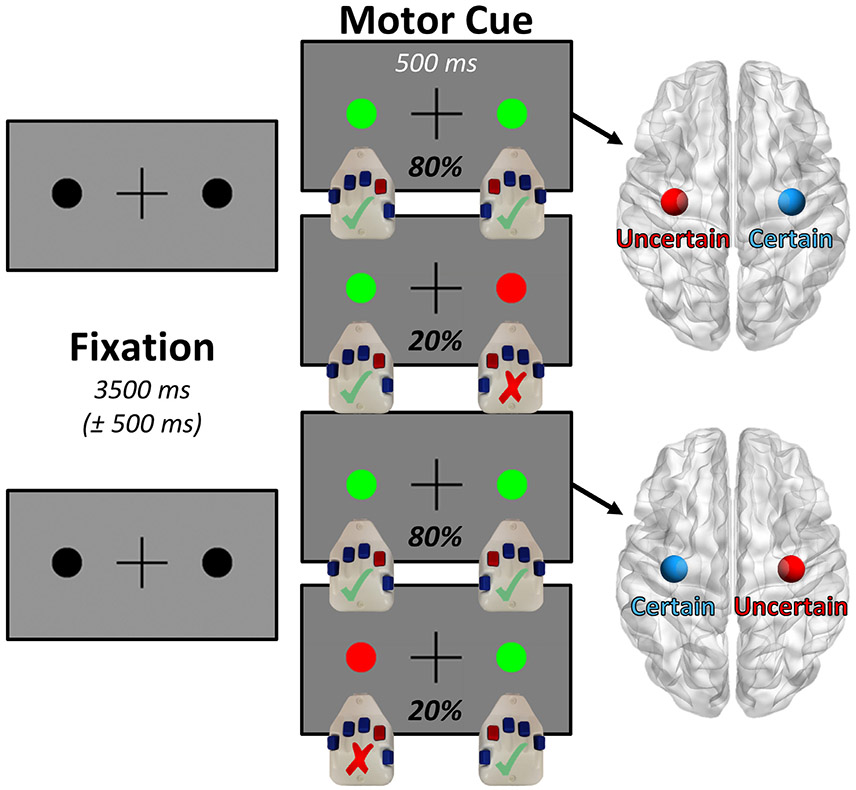Fig. 1. Bimanual motor task design.
Participants completed 150 trials of the paradigm shown above, each of which began with a variable fixation period (3500 ± 500 ms), a portion of which functioned as our pre-movement baseline. Following this fixation period, each of the two black circles flanking the central fixation cross would change color (500 ms), with two possible stimulus combinations per participant. If both of the circles turned green (80% of trials), the participant was instructed to respond by button press with their index finger on both hands, and importantly these trials were the only ones included in further analysis. In contrast, if one of the two circles turned red (consistently on the left or right side, counterbalanced across participants), then the participant was told to inhibit the motor response on the hand corresponding to that side. This created a lateralized effect of contextual motor certainty, allowing us to contrast the amplitude of the bilateral motor responses representing the bimanual movements within participants to examine effects of motor certainty on motor-related oscillatory dynamics.

